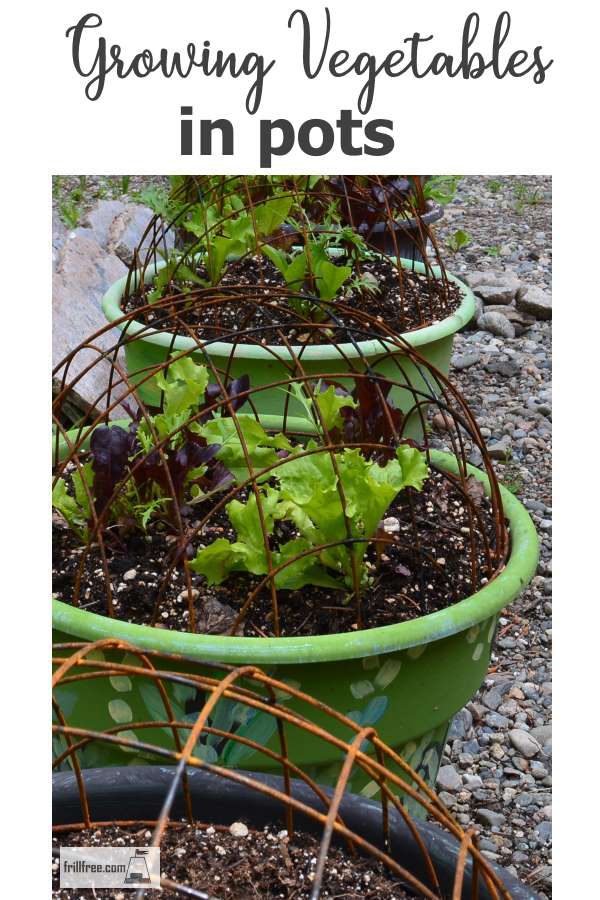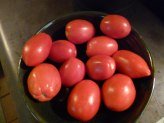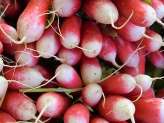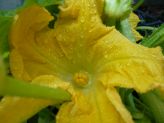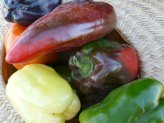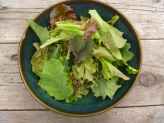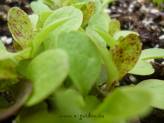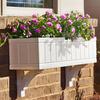- Homesteading
- Growing Vegetables
- Growing Vegetables in Pots
Growing Vegetables in Pots
Container Gardening
There are many new varieties of vegetables that are compact, low growing, and ripen their fruit sooner than the regular kind - perfect candidates for growing in pots and containers.
To grow vegetables in smaller confined spaces, you still need full
sun, but you'll need to water more often than if the same plants were
planted in the ground. The pots dry out faster, so you'll need to be
aware of the type of soil, as well.
The best options for container growing are the types of plants labeled 'patio' or 'basket' sized. These tend to be bred for their habit of remaining shorter and more compact than their parents, whilst still having the same taste.
Grow these vegetables in pots for the best success;
- Tomatoes - look for varieties like 'Tom Thumb' and 'Tumbling Tom' which are bred for planting in hanging baskets to save even more room.
- Radishes - the shorter red types rather than daikon will work better in the shallower soil in pots.
- Patty Pan Squash - 'Sunburst' is listed as space saving bush-type plants - just because they're dwarf, doesn't mean the fruit is any less tasty!
- Red or Green Peppers - look for one variety called 'Redskin'.
Capsicum peppers have a lot of tiny, really hot fruit.
- Lettuce - micro greens are cut when they're only a few inches tall and still deliciously tender.
Re-seed frequently for subsequent crops.
- Other kinds of greens like Asian stir fry greens, spinach. Use the 'cut and come again' method to keep them producing for a long time.
Baby lettuce and other greens are called 'cut and come again' greens. Cutting them off gives them a chance to grow again, giving you a second (or even a third) crop.
Even a few vegetables planted in pots near the kitchen door can give you an astonishing array of fresh pickings to add to a salad.
Plant a good variety of things so you can swap them out with new ones as the summer goes on, making sure you always have something fresh and interesting.
There is no need to purchase expensive containers to plant vegetables in. Use what you have, including things like washing machine tubs, tires and lumber scraps to make raised beds. More ideas on the recycling in the garden page.
Potatoes do extremely well in stacked up tires. Put a layer of soil in the bottom one, then plant the seed potatoes in there. Water them often, especially during dry periods.
As the potatoes sprout and grow, cover them regularly with more soil. You can even stack more tires if you need to.
By the middle of July or into August, depending on what kind of potatoes you grew, there might be flowers. Discontinue watering and let the vines die back.
Then you can unstack the tires, exposing all those lovely spuds!
A newish container that's turning out to be extremely handy are grow bags. Plant them for the season, then turn the soil out and fold them up to store. This is a fairly economical way to grow many different plants in a small space.
Soil for Growing Vegetables in Pots
The soil for container growing is a lot different than what you need in a garden. Don't use garden soil in pots and expect to have great success.
The type of conditions in a container are a lot different than a garden bed, and, with garden soil you could miss the crucial mix of micro organisms, like certain fungi, millipedes or bacteria.
Without this beneficial micro herd being in perfect balance, your growing area will be deficient in something or other.
I recommend pasteurized soil, and this is the perfect way to recycle last years soil mix, and add some more nutrients to it.
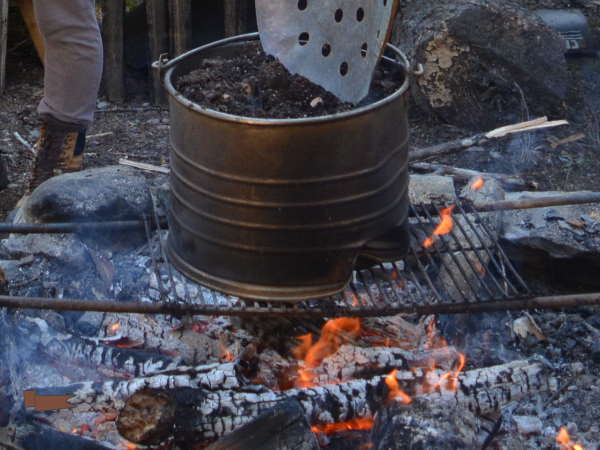 Pasteurizing Soil over a fire
Pasteurizing Soil over a fireI use a big kettle over a bonfire to pasteurize the soil, after mixing the old potting soil about half and half with matured compost (pick the worms out first, and return them to the bin) and cook it until the interior of the kettle of soil is steaming.
Then take it off the fire and let it cool. Mix in a coffee can of Dolomite lime to buffer the pH, and then it's ready for planting.
Alternately, use potting mix like Sunshine Mix. Don't attempt to use regular garden soil in your containers as it packs down too tightly.
What Other Visitors Have Said
Click below to see contributions from other visitors to this page...
10 Small-Space Gardening Ideas Made Easy Not rated yet
Gardening is a hobby that can deliver fresh food, lovely flora and a sense of calmness. Not everyone has the luxury of gardening in an expansive outdoor …
